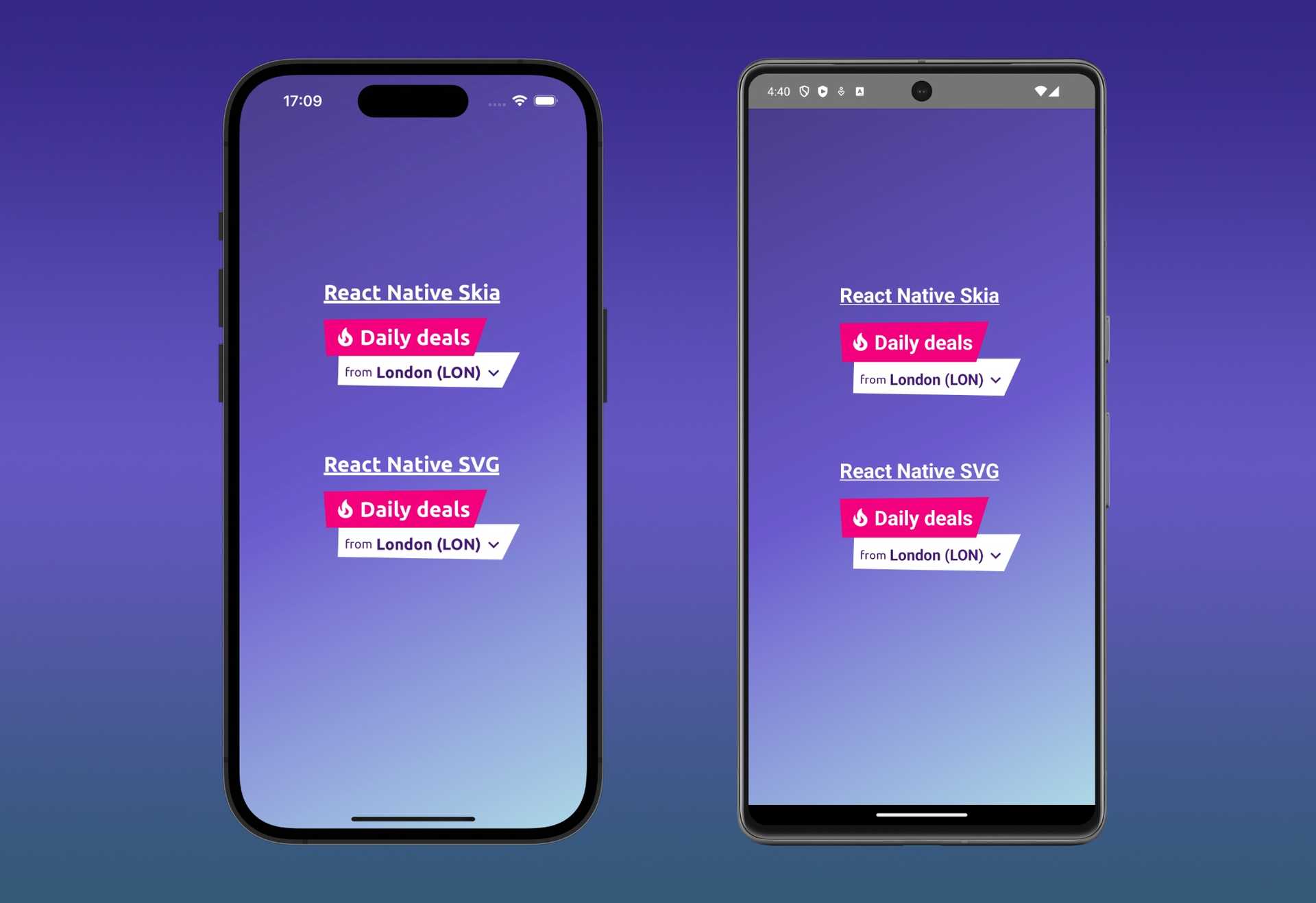In this post I will talk about a simple architecture for communication between React Native Native modules (aka bridges) and your native code on Android.
Sometimes a React Native app needs to access to the native API or needs/want to call some existing native code you
already have in place. This is why Native Modules have been created for
both iOS
and Android. Sometimes when you integrated React
Native in an existing app, you will want to be able let your Native Modules bridges communicate with your activities and
fragment, especially the ones that contain the React Native View. In this post I will show you an architecture to put in
place this communication on Android, that will be compatible with all the features of React Native (for example it will
work also with the live reload functionality). This is an architecture I put in place with my
colleague Felice Giovinazzo in our apps
at lastminute.com group. Felice is a senior fullstack developer with
many years of experiences (he is the "lastminute" veteran of our team) and a computer graphics enthusiast like me :
revolving_hearts:.
To show you this architecture I will create a simple app that show a React Native screen as a modal. I will then
implement the close button functionality by calling a native module from the onPress on a React Native button. Below
you can see the final result.
The architecture we put in place is based on a Event Bus in which the Native Modules bridges notify the subscribed
Activities/Fragments of the actions to be executed. So each one of them is subscribed to specific events to which they
are able to respond. We choose Otto as event bus library (we don't want to reinvent
the wheel ). Let's start from the
MainActivity. In it there's only a button with an action to start the React
Native modal activity.
public class MainActivity extends AppCompatActivity {
@Override
protected void onCreate(Bundle savedInstanceState) {
super.onCreate(savedInstanceState);
setContentView(R.layout.activity_main);
}
public void showReactNativeModal(View view) {
startActivity(new Intent(this, ReactNativeModalActivity.class));
}
}The ReactNativeModalActivity is an Activity with the setup needed to launch a React Native context. This activity is
registered to the event bus to be able to listen to events from the Native Modules bridges. In this case the activity is
subscribed to just one event with the
method @Subscribe public void close(ReactNativeModalBridge.CloseModalEvent event).
public class ReactNativeModalActivity extends AppCompatActivity implements DefaultHardwareBackBtnHandler {
private final int OVERLAY_PERMISSION_REQ_CODE = 8762;
private ReactRootView mReactRootView;
private ReactInstanceManager mReactInstanceManager;
@Override
protected void onCreate(@Nullable Bundle savedInstanceState) {
super.onCreate(savedInstanceState);
registerToReactEvents();
askReactDrawingPermission();
setupReactView();
}
@Override
protected void onDestroy() {
super.onDestroy();
unregisterToReactEvents();
if (mReactInstanceManager != null) {
mReactInstanceManager.onHostDestroy(this);
}
if (mReactRootView != null) {
mReactRootView.unmountReactApplication();
}
}
private void registerToReactEvents() {
((NativeModulesApplication)getApplication())
.getBus()
.register(this);
}
private void unregisterToReactEvents() {
((NativeModulesApplication)getApplication())
.getBus()
.unregister(this);
}
@Subscribe
public void close(ReactNativeModalBridge.CloseModalEvent event) {
finish();
}
private void askReactDrawingPermission() {
if (Build.VERSION.SDK_INT >= Build.VERSION_CODES.M) {
if (!Settings.canDrawOverlays(this)) {
Intent intent = new Intent(
Settings.ACTION_MANAGE_OVERLAY_PERMISSION,
Uri.parse("package:" + getPackageName())
);
startActivityForResult(intent, OVERLAY_PERMISSION_REQ_CODE);
}
}
}
private void setupReactView() {
...
}
...
}
Now let's have a look at Native Module created for the app, the ReactNativeModalBridge. In this bridge there just one
react method, closeModal. This is the one called from the React Native JS side. In this method we are sending an event
of type CloseModalEvent. The ReactNativeModalActivity is subscribed to this type of event (as we saw above). This
basically means that when the closeModal bridge method will be called from the React Native Javascript code a new
event CloseModalEvent is generated and the ReactNativeModalActivity will execute the subscribed method defined in
it. We have all setup to have our Native Modules communication with our activities (and eventually fragment with the
same approach if we need them ).
public class ReactNativeModalBridge extends ReactContextBaseJavaModule {
public ReactNativeModalBridge(ReactApplicationContext reactContext) {
super(reactContext);
}
@Override
public String getName() {
return this.getClass().getSimpleName();
}
@ReactMethod
public void closeModal() {
final Activity currentActivity = getCurrentActivity();
currentActivity.runOnUiThread(new Runnable() {
@Override
public void run() {
((NativeModulesApplication) currentActivity.getApplication())
.getBus()
.post(new CloseModalEvent());
}
});
}
public class CloseModalEvent { }
}Now it's time to see the javascript code. Below you can see the ReactNativeModal component. Inside this component
there is a call to the native module NativeModules.ReactNativeModalBridge.closeModal() described above. In this way
the modal will be closed directly from the native side.
class ReactNativeModal extends React.Component {
render() {
return (
<View style={styles.container}>
<Text style={styles.hello}>Hello modal!</Text>
<Text style={styles.message}>
I'm a react native component. Click on the button to close me using native function.
</Text>
<Button
title={"Close me"}
onPress={() => NativeModules.ReactNativeModalBridge.closeModal()}
/>
</View>
);
}
}That's all for our native modules communication architecture on Android. You can find the complete example
in this github repository. If you want to know
how we managed the same problem on the iOS platform you can
read my other post about the same topic.




